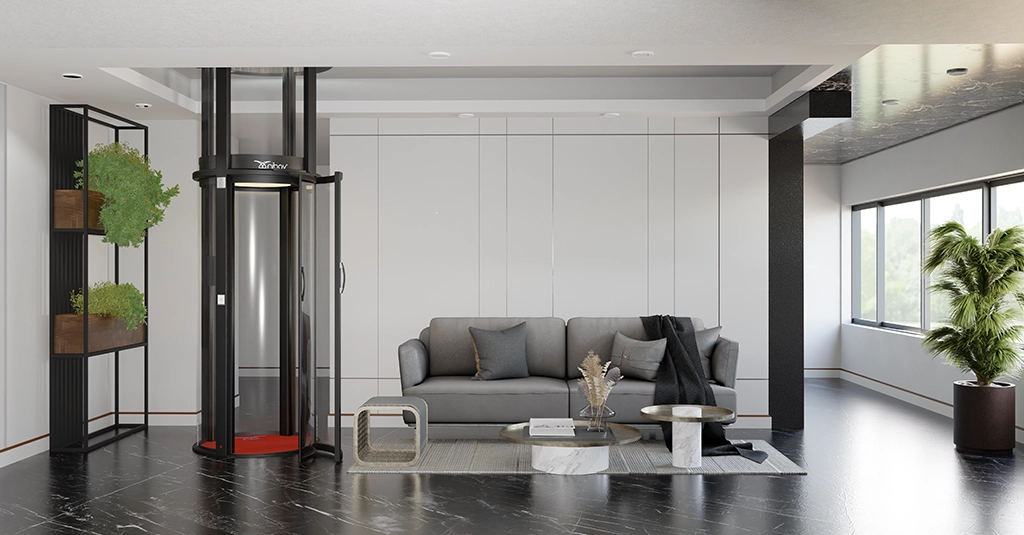Home Lifts vs Stairlifts: Which Is Better for Your
The Nibav Team, September 26, 2024

Introduction:
Have you ever wondered how you can improve the accessibility of your home? The Obvious answers are home lifts and stairlifts. Yes, both of them serve one simple purpose: To move between floors. Yet they are very different products having their own advantages and disadvantages. Before you make a choice, it is imperative that you weigh the pros and cons of each with your unique needs. This blog will help you better distinguish between the two and help make a choice that best fits your needs.
Home lifts: What Are They?
Home lifts are elevators specifically made to move people and belongings between levels as efficiently as possible without hindering the aesthetics of your home. This is in stark contrast to stair lifts, which go along the staircase. Home elevators travel straight up and down a vertical shaft. For instance, Nibav’s home lifts are pneumatic vacuum elevators that shift the cabin between levels using air pressure. Their space-saving installation, safety features, and sleek design makes them the most sought-after home lifts in the market.
Understanding Stairlifts:
Stairlift chairs are secured to a rail that runs the entire distance of the stairs. People who are disabled or require assistance going up and down stairs frequently utilize stairlifts. A practical and affordable solution for anyone looking to increase accessibility are stairlifts. This is due to the fact that they frequently require less installation labor and cost less than house elevators.
Installation and Space Requirements:
The installation procedure and space restrictions are two important distinctions between stairlifts and house lifts. In order to fit the lift shaft, home elevators need additional room and some structural adjustments. On the other hand, Nibav’s house elevators are made to be tiny enough to fit into tighter locations without requiring a machine room or a lot of building work. In contrast, installing a stairlift is typically less complicated and takes only a few hours. Although they don’t necessitate any structural modifications to your house, they do take up room on the staircase, which may be an issue if the steps are narrow.
Cost Considerations:
When deciding between a stairlift and a house lift, lift cost is still another crucial aspect to take into account. Home elevators typically come with a greater initial cost because of the technology and installation difficulty. Nonetheless, they provide long-term advantages and significantly increase the value of your property. Although they may not add as much value to your property and may require more frequent maintenance, stairlifts are initially less expensive. A house lift might be a better choice if you’re seeking for a solution that provides accessibility and a good return on investment.
Usability and Convenience:
In terms of ease of use and practicality, residential elevators are more adaptable than stairlifts. Multiple passengers as well as large, heavy objects like laundry, furniture, and groceries can be transported in home elevators. They are therefore a useful option for people or families who frequently need to move objects between floors. Stairlifts are less practical for moving things around because they are mainly meant for individual use. They work best for those who don’t need help moving furniture—just getting up and down stairs.
Aesthetic Impact:
Aesthetic attractiveness is an additional factor that may impact your choice. Home elevators can be made to match the interior decor of your house, especially those made by Nibav. They provide a sleek, contemporary appearance that might improve your home’s overall style. Although functional, stairlifts tend to look more utilitarian and can take up more space in the design of your home. A home elevator can be the better option if you value keeping your property’s aesthetic appeal.
Safety and Comfort:
Safety is a crucial factor, especially for those with mobility issues. Home lifts provide a fully enclosed cabin, reducing the risk of falls and accidents. They also offer a smooth and comfortable ride, which can be particularly important for elderly users. Stairlifts, while safe, are less comfortable for some individuals, especially those who may feel insecure on an open chair moving along a rail. The enclosed nature of a home lift can provide greater peace of mind and a more pleasant experience.
Future-Proofing Your Home:
Ultimately, when thinking about the long run advantages, home elevators are a better option for future-proofing your house. A house lift may adapt to your changing mobility needs over time, providing a dependable and easily accessible solution for many years to come. As your needs change, stairlifts might not be as useful—especially if you need to move larger objects between floors or need additional assistance. Purchasing a home elevator guarantees that your house will be comfortable and accessible for you as you get older.
Conclusion:
Choosing between a home lift and a stairlift ultimately depends on your specific needs, budget, and preferences. While both options provide solutions for improving home accessibility, home lifts.